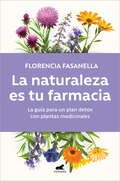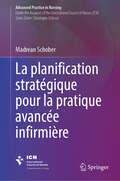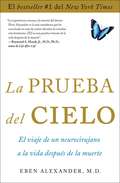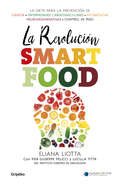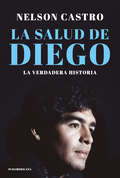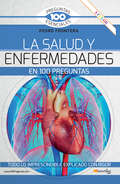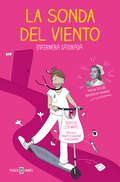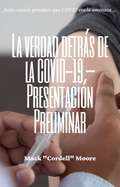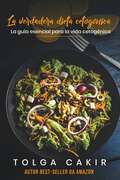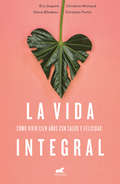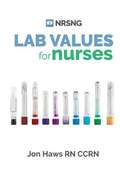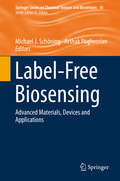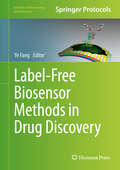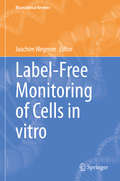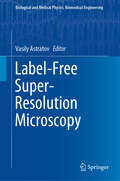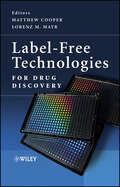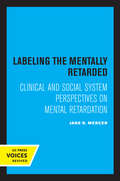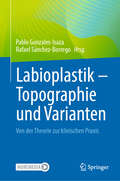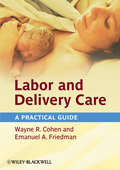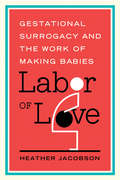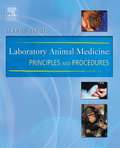- Table View
- List View
La muerte es un día que vale la pena vivir
by Ana Claudia Quintana ArantesUna nueva mirada a la vida que nos enseña que el final del viaje puede ser extraordinario. Este libro, escrito por una de las mejores especialistas en Cuidados paliativos del mundo, Ana Claudia Quintana Arantes, es una guía única que ha ayudado a miles de personas a transitar el miedo, la angustia en torno a la muerte y a dotar tanto de sentido como de amor hasta el último de sus días. Durante veinte años de experiencia clínica, la doctora Quintana Arantes, especializada en Geriatría, Gerontología y Psicología, se ha enfocado en brindar atención integral a pacientes de enfermedades crónicas, entendiendo que cada uno vive un dolor que no sólo es físico, también es emocional, social y espiritual. Es por ello que, en estas páginas, sugiere a familiares y médicos de pacientes terminales el acompañamiento óptimo para hacer amable el momento de partir. La muerte es un día que vale la pena vivir es una invitación no sólo para cuidadores, sino para aquellos que buscan repensar la existencia, comprender la muerte como un proceso natural, descubrir que ahí donde la medicina falla, hay todo un campo de posibilidades.
La naturaleza es tu farmacia: La guía para un plan detox con plantas medicinales
by Florencia FasanellaElimina las toxinas de tu cuerpo con las propiedades de las plantas de tu entorno. Nuestro cuerpo, y muy especialmente el hígado y los riñones, tienden a acumular toxinas y elementos que, a la larga, pueden afectar a nuestro organismo. Por ello, es necesario depurarnos y facilitar su eliminación. En cualquier farmacia podemos encontrar decenas de productos que facilitan los llamados planes detox. Este libro nos demuestra que no es necesario recurrir a ellos.Florencia Fasanella es farmacéutica y lleva años estudiando los efectos de las plantas medicinales. Plantas comunes cuyas propiedades nos abren un mundo de posibilidades curativas. La naturaleza es tu farmacia es una guía completa para comprender cómo debemos usarlas para cuidar de nuestra salud.
La pirámide de la salud
by Kris VerburghComer correctamente retrasa el envejecimiento, evita ciertas enfermedades y mejora otrasLos últimos descubrimientos científicos sobre longevidad y nutrición evidencian que la alimentación es vital para nuestro bienestar y tiene un peso enorme en el proceso de envejecimiento de nuestro cuerpo y nuestra mente.¿Sabías qué?¿La mayoría de dietas no son saludables?¿Muchas grasas son buenas para el corazón?¿Casi ningún antioxidante retrasa el envejecimiento?¿El té blanco reduce la aparición de arrugas y, al mismo tiempo, es muy beneficioso para los vasos sanguíneos?¿Que los estudios demuestran que las personas que comen nueces todos los días ven reducida la posibilidad de padecer un ataque al corazón en un 45 por ciento?El Dr. Verburg nos muestra una nueva pirámide alimenticia que tiene, además, una contrapirámide: un «reloj de arena» que nos permite identificar rápidamente los alimentos saludables y los que debemosevitar en nuestra dieta proponiéndonos alternativas.Con una correcta alimentación no solo podemos prevenir ciertas enfermedades, sino que también podemos mejorar sustancialmente otras y retrasar considerablemente nuestro proceso de envejecimiento.La pirámide de la salud es un bestseller internacional publicado con enorme éxito en Inglaterra, Italia, Alemania, Dinamarca, Países Bajos y Polonia.
La planification stratégique pour la pratique avancée infirmière (Advanced Practice in Nursing)
by Madrean SchoberCet ouvrage très attendu permet aux lecteurs de comprendre la dynamique des processus politiques, la recherche de pertinence dans les prises de décision et l’importance des décideurs clés. Il met également l’accent sur la nécessaire mobilisation des compétences en matière de négociation et de diplomatie pour soutenir l’introduction de la fonction d’infirmière pratique avancée (IPA) ; ce projet requiert l’identification et l’exploration des questions essentielles qui permettront de s’assurer que les infirmières puissent libérer leur potentiel. Les sujets abordés comprennent une définition de la planification stratégique, les facteurs essentiels à prendre en compte et les cadres de référence à utiliser dans le contexte de la formulation de politiques efficaces. En abordant les indicateurs de résultats et la contribution de la recherche, ce volume offre une approche complète de la planification coordonnée et intéressera les infirmières en pratique avancée, les planificateurs et les décideurs en matière de soins de santé, ainsi que les administrateurs d’hôpitaux et d’établissements de soins de santé.
La prueba del cielo: el viaje de un neurocirujano a la vida después de la muerte
by Eben AlexanderMiles de personas han tenido experiencias cercanas a la muerte, pero los científicos han sostenido de que son imposibles. El doctor Eben Alexander era uno de esos científicos. Un neurocirujano altamente entrenado, Alexander sabía que las experiencias cercanas a la muerte se sienten reales, pero que simplemente son fantasías producidas por el cerebro bajo un estrés extremo. Luego, el cerebro del propio doctor Alexander fue atacado por una extraña enfermedad. La parte del cerebro que controla los pensamientos y las emociones —y en esencia nos hace humanos— se le apagó por completo. Estuvo en coma durante siete días. Entonces, mientras sus médicos consideraban parar su tratamiento, los ojos de Alexander se abrieron. Volvió. La recuperación de Alexander es un milagro médico. Pero el verdadero milagro de su historia yace en otro lugar. Mientras su cuerpo estaba en coma, Alexander viajó más allá de este mundo y se encontró con un ser angelical que lo guió a los terrenos más profundos de la existencia suprafísica. Allá conoció a, y habló con, la fuente Divina del universo. La historia de Alexander no es una fantasía. Antes de comenzar su viaje, no podía reconciliar su conocimiento de la neurociencia con ninguna creencia del cielo, Dios ni el alma. Hoy en día, Alexander es un médico que cree que la verdadera salud se puede adquirir solo cuando nos damos cuenta de que Dios y el alma son reales y la muerte no es el final de la existencia personal, sino solo una transición. Esta historia sería extraordinaria sin importar a quién le haya ocurrido. Que le haya ocurrido al doctor Alexander la hace revolucionaria. Ningún científico ni persona de fe la podrá ignorar. Leerla te cambiará la vida.
La revolución Smartfood
by Eliana Liotta Lucilla Titta Pier Giuseppe PelicciEl libro de la dieta para la prevención de cáncer, enfermedades cardiovasculares, metabólicas, neurodegenerativas y el control de peso. Descubre cómo mantenerte sano y en forma con los 30 alimentos que alargan la vida. Aunque estemos genéticamente predispuestos a determinadas enfermedades, una sana y correcta alimentación puede «corregir nuestro destino». Esta es la premisa de La revolución Smartfood, el primer libro de nutrición que propone una dieta certificada por los científicos del Instituto Europeo de Oncología y del Centro Cardiológico Monzino. También es la primera vez que una dieta se relaciona indisolublemente con la prevención del cáncer, del envejecimiento y de las patologías cardiovasculares, metabólicas y neurodegenerativas. Los protagonistas de esta revolución son 30 alimentos que contienen moléculas que influyen en la duración y la calidad de la vida, y que protegen el organismo y lo preservan de la obesidad, del envejecimiento y otras enfermedades crónicas. Además, La revolución Smartfood: - Propone un esquema correcto de alimentación para toda la familia. - Presenta recetas sabrosas para convertir la salud en un estilo de vida. - Muestra sugerencias y secretos para la conservación y la óptima cocción de los alimentos. - Desmitifica creencias erróneas.
La salud de Diego. La verdadera historia
by Nelson CastroDe las rutinas de un atleta a las adicciones y la muerte del mayor jugador de fútbol de todos los tiempos. Diego Armando Maradona ya era un adicto cuando millones quedaron atónitos ante aquel gol inigualable contra los ingleses durante el Mundial 86. A partir de entonces, a las drogas se sumaron el alcohol, la adicción al sexo y el descontrol alimentario. Esos consumos terminarían por acorralarlo en un cuarto sórdido del Gran Buenos Aires. Junto con los días oscuros que precedieron su muerte, ocurrida el 25 de noviembre de 2020, la vida completa del ídolo volvió a ser revisada y juzgada. Sin embargo, hay una historia que nadie contó hasta ahora: la de su cuerpo. Desde las primeras lesiones óseas y musculares de Fiorito hasta las extenuantes campañas deportivas en Europa; desde su fenomenal fortaleza muscular hasta el dolor físico y anímico al que intentó sobreponerse dentro y fuera de la cancha. Para escribir La salud de Diego, Nelson Castro accedió a archivos secretos, entrevistó a testigos que nunca habían hablado y revisó miles de documentos inéditos. El resultado excede por mucho el ya impresionante historial médico. Este libro excepcional es, antes que nada, el relato impactante de una caída vertiginosa y triste: la biografía íntima y trágica de un ser humano con dones extraordinarios. «Aunque todo lo escrito aquí es real, la historia que está a punto de comenzar tiene ribetes novelescos y, por momentos, supera cualquier ficción imaginable», dice Nelson Castro, periodista y médico graduado con honores en la Universidad de Buenos Aires.
La salud y enfermedades en 100 preguntas (100 preguntas Esenciales)
by Pedro FronteraNo hay libros de divulgación que expliquen de una manera atractiva, sencilla y comprensible pero científica, todo lo que quiere conocer sobre las enfermedades más frecuentes, las que afectan a una amplia mayoría de la población. Este libro responde a las necesidades del lector medio no profesional sanitario, pero con interés en los temas médicos.
La sonda del viento
by Enfermera SaturadaEnfermera Saturada regresa con su particular visión del mundo sanitario cargada de humor negro e ironía. La salud es algo muy serio, por eso es mejor tomársela con humor. Así lo cree esta enfermera que recorre los pasillos a toda pastilla y que en La sonda del viento analiza con detalle las muestras de sus pacientes y todo lo que le rodea. Desde lo complicado que es aparcar en los hospitales hasta las cenas de empresa, pasando por todo el catálogo de cacharritos para revisarnos la salud en casa, las contraseñas imposibles de recordar o los momentos más surrealistas vividos en la puerta de Urgencias y en el laboratorio. Porque aunque no lo creamos para el análisis de heces es suficiente una muestra del tamaño de una nuez. Un divertido viaje al corazón de un hospital que bien podría ser el nuestro. Porque el humor no cura las heridas ni acaba con las listas de espera, pero al menos lo hace todo más soportable.Héctor Castiñeira nació en Lugo y se graduó en Enfermería por la Universidad de Santiago de Compostela. Especialista en Enfermería del Trabajo, ha cursado másteres en Formación del Profesorado, Urgencias y Emergencias, Comunicación Científica y en Seguridad Clínica. Experto en cuidados críticos del paciente adulto y neonatal, Héctor ha trabajado como enfermero en el Servicio Madrileño de Salud, en Emerxencias Sanitarias de Galicia 061 y en el Servizo Galego de Saúde, donde en la actualidad desarrolla su labor asistencial. Considerado el perfil más influyente en gestión sanitaria por la IMF Business School, es colaborador semanal desde hace varios años en medios de comunicación (Antena 3, La Sexta, TVE, Radio Galega, RNE o El Mundo) donde realiza divulgación de temas de salud y desde donde ayuda a combatir las fake news de la salud. Embajador de la iniciativa Salud sin Bulos y miembro de la Asociación Española de Comunicación Científica, ha recibido importantes premios nacionales en reconocimiento a su labor de promoción, defensa y visibilidad de la profesión enfermera. Críticas:«El enfermero escritor que vacuna contra el aburrimiento».El Mundo «El humor como terapia sanitaria y medio de supervivencia».El Periódico «Su autor consigue lo que parece imposible, describir con humor la precaria situación de las enfermeras españolas».Cadena SER
La transferencia: El hombre se esconde para envejecer
by M. HermassiEste manuscrito es una teoría futurista basada en una mente, y datos científicos, Hoy es ficción, quién sabe mañana, puede ser factible **********. A todos los que no pongan barreras a la investigación científica. ********** ¿Quiénes somos? ¿Cuáles son nuestras capacidades nuestros poderes, y nuestros límites? Los más eminentes de los estudios les dirán:Sabemos muy poco sobre estas cuestiones. Una razón más para buscar cualquier azimut.Esta teoría que vas a descubrir hojeando este librito, abre una puerta sobre estas cuestiones; sobre todo de nuestros poderes. Una sola recomendación del autor. Si usted tiene la mente conservadora, elija, otra lectura. Por el contrario, si son curiosos y liberales, se van hacer muchas preguntas: la primera es: "¿y si fuera posible?"
La verdad detrás de la COVID-19 –Presentación Preliminar
by Mack C. MooreLa verdad detrás de la COVID-19 –Presentación Preliminar de Mack C. Moore Preguntas que se han realizado acerca de la COVID-19 ¿Aprobó China una ley de vacunación antes de la pandemia? ¿Son los informes sobre la COVID-19 precisos? ¿Son seguras las vacunas? ¿Es la COVID-19 una amenaza real? Encuentre las respuestas a estas preguntas y mucho más en… La verdad detrás de la COVID-19 – Presentación preliminar. Este libro cuestiona la narrativa respecto de los informes existentes sobre la pandemia. Además, elimina los miedos y las preocupaciones que tenemos acerca de la COVID. Expondrá la verdad detrás de la pandemia de la COVID-19. Sin embargo, se trata de la presentación preliminar de una versión más detallada y explosiva ¡que saldrá a la luz a finales de 2021! ¡Descubra qué nos han estado ocultando!
La verdadera dieta cetogénica: La guía esencial para la vida cetogénica
by Tolga CakirLa dieta cetogénica es ahora la dieta de moda en el mundo de la nutrición. Desde 2016, las tendencias de Google indican un aumento considerable de las búsquedas de la dieta cetogénica. Muchas celebridades famosas han utilizado la dieta para transformar sus cuerpos. Keto, que se refiere a la dieta cetogénica alta en grasas y baja en carbohidratos, parece ser la nueva palabra de moda de la dieta. La dieta promete algo para todo el mundo, con afirmaciones de que se puede comer toda la grasa que se quiera, no volver a sentir hambre, reducir el azúcar en sangre si se tiene diabetes tipo 2, e incluso aumentar los resultados deportivos.
La vida integral
by Eric Dupont Christine Michaud Diane BilodeauDescubre las claves de la salud global para transformar tu vida y alcanzar una existencia plena. La esperanza de vida aumenta sin cesar, pero ¿significa eso que vivimos nuestras últimas décadas en plena forma? Nada menos cierto. <P><P>A la luz de los más recientes estudios sobre la longevidad, Éric Dupont se ha rodeado de diversos especialistas para proponer un enfoque preventivo y global de la salud, es decir, un conjunto de elementos que favorecen la salud física y estimulan los mecanismos fisiológicos beneficiosos del cuerpo, a la vez que pone de relieve los factores emotivos y psicológicos que participan en el bienestar y dan sentido a la vida. <P><P>Nutrición, microbiota, actividad física, estrés, sueño, suplementos alimenticios, relaciones y realización son algunos de los temas de esta obra exhaustiva, profusamente ilustrada y rebosante de consejos prácticos, que permitirá a todo aquel que lo desee alcanzar la venerable edad de cien años+ dichoso y en plena posesión de sus facultades.
Lab Values: 63 Must Know Labs for Nurses
by Jon Haws Sandra Haws#1 Best Selling Nursing Reference Book on Amazon Want to study better, but don't have the time? This book outlines the 63 MUST KNOW lab values for nurses to help them prepare for the NCLEX ® and care for patients on the floor. Whether you are a student nurse or an experience this book contains the information you need to know to provide superior patient care. <p><p> Charts + Brief Descriptions = Fast Learning <p> The book includes a brief introduction followed by charts including 63 important lab values with their units, normal ranges, and abbreviations. The charts are followed by a brief description for each individual value including: indications, what would cause abnormal values, and a description of the lab value itself. <p> Download :: Lab Values: 63 Must Know Lab Values for Nurses <p>Lab Values contains an easy to read and follow catalog of the most essential labs for nurses.<br> Color graphics and charts<br> Normal lab values and common abbreviations<br> Descriptions of each value<br> Correct filling order for specimen tubes<p> Stop wasting time on you studies and start acing exams and spending more time actually caring for patients. With this ebook for kindle or kindle app you will learn the 63 most important labs for nurses and the NCLEX - RN ®. This is the perfect pocket guide and makes lab value interpretation easy. **FREE** Gift included (4 Page PDF download and lab charts).<p> NCLEX, NCLEX-RN, and NCLEX-PN are registered trademarks of the National Council of State Boards of Nursing, Inc. They hold no affiliation with this product.
Label-Free Biosensing: Advanced Materials, Devices and Applications (Springer Series on Chemical Sensors and Biosensors #16)
by Michael J. Schöning Arshak PoghossianThis volume summarizes the state-of-the-art technologies, key advances and future trends in the field of label-free biosensing. It provides detailed insights into the different types of solid-state, label-free biosensors, their underlying transducer principles, advanced materials utilized, device-fabrication techniques and various applications. The book offers graduate students, academic researchers, and industry professionals a comprehensive source of information on all facets of label-free biosensing and the future trends in this flourishing field. Highlights of the subjects covered include label-free biosensing with:· semiconductor field-effect devices such as nanomaterial-modified capacitive electrolyte-insulator-semiconductor structures, silicon nanowire transistors, III-nitride semiconductor devices and light-addressable potentiometric sensors· impedimetric biosensors using planar and 3D electrodes· nanocavity and solid-state nanopore devices · carbon nanotube and graphene/graphene oxide biosensors· electrochemical biosensors using molecularly imprinted polymers· biomimetic sensors based on acoustic signal transduction· enzyme logic systems and digital biosensors based on the biocomputing concept· heat-transfer as a novel transducer principle· ultrasensitive surface plasmon resonance biosensors · magnetic biosensors and magnetic imaging devices
Label-Free Biosensor Methods in Drug Discovery
by Ye FangThis volume explores label-free biosensors, advantageous in part because this technology bypasses the need of labels, reporters, and cell engineering, all of which are common to labeled techniques but may introduce artifacts in assay results. Addressing several fundamental and practical aspects as to how to implement label-free methods in the drug discovery process, this book covers a wide range of topics, including binding kinetics determination, fragment screening, antibody epitope mapping, protein-protein interaction profiling and screening, receptor pathway deconvolution, drug pharmacology profiling and screening, target identification, drug toxicity assessment, and physical phenotype profiling and diagnostics based on various cellular processes such as cell adhesion, migration, invasion, infection, and inflammation. As part of the Methods in Pharmacology and Toxicology series, chapters aim to provide key detail and implementation advice to aid with progress in the lab. Practical and thorough, Label-Free Biosensor Methods in Drug Discovery provides a new avenue for rapid access to a focused collection of highly regarded contributions in the field.
Label-Free Monitoring of Cells in vitro (Bioanalytical Reviews #2)
by Joachim WegenerThis book is dedicated to label-free, non-invasive monitoring of cell-based assays and it comprises the most widely applied techniques. Each approach is described and critically evaluated by an expert in the field such that researchers get an overview on what is possible and where the limitations are. The book provides the theoretical basis for each technique as well as the most successful and exciting applications.Label-free bioanalytical techniques have been known for a long time as valuable tools to monitor adsorption processes at the solid-liquid interface in general – and biomolecular interaction analysis (BIA) in particular. The underlying concepts have been progressively transferred to the analysis of cell-based assays. The strength of these approaches is implicitly given with the name 'label-free': the readout is independent of any label, reagent or additive that contaminates the system under study and potentially affects its properties. Thus, label-free techniques provide an unbiased analytical perspective in the sense that the sample is not manipulated by additives but pure. They are commonly based on physical principles and read changes in integral physical properties of the sample like refractive index, conductivity, capacitance or elastic modulus to mention just a few. Even though it is not implied in the name, label-free approaches usually monitor the cells under study non-invasively meaning that the amplitude of the signal (e.g. electric field strength, mechanical elongation) that is used for the measurement is too low to interfere or affect. In contrast to label-based analytical techniques that are commonly restricted to a single reading at a predefined time point, label-free approaches allow for a continuous observation so that the dynamics of the biological system or reaction become accessible.
Label-Free Super-Resolution Microscopy (Biological and Medical Physics, Biomedical Engineering)
by Vasily AstratovThis book presents the advances in super-resolution microscopy in physics and biomedical optics for nanoscale imaging. In the last decade, super-resolved fluorescence imaging has opened new horizons in improving the resolution of optical microscopes far beyond the classical diffraction limit, leading to the Nobel Prize in Chemistry in 2014. This book represents the first comprehensive review of a different type of super-resolved microscopy, which does not rely on using fluorescent markers. Such label-free super-resolution microscopy enables potentially even broader applications in life sciences and nanoscale imaging, but is much more challenging and it is based on different physical concepts and approaches. A unique feature of this book is that it combines insights into mechanisms of label-free super-resolution with a vast range of applications from fast imaging of living cells to inorganic nanostructures. This book can be used by researchers in biological and medical physics. Due to its logically organizational structure, it can be also used as a teaching tool in graduate and upper-division undergraduate-level courses devoted to super-resolved microscopy, nanoscale imaging, microscopy instrumentation, and biomedical imaging.
Label-Free Technologies For Drug Discovery
by Matthew Cooper Lorenz M. MayrOver the past two decades the benefits of label-free biosensor analysis have begun to make an impact in the market, and systems are beginning to be used as mainstream research tools in many drug discovery laboratories.Label-Free Technologies For Drug Discovery summarises the latest and emerging developments in label-free detection systems, their underlying technology principles and end-user case studies that reveal the power and limitations of label-free in all areas of drug discovery.Label-free technologies discussed include SPR, NMR, high-throughput mass spectrometry, resonant waveguide plate-based screening, transmitted-light imaging, isothermal titration calorimetry, optical and impedance cell-based assays and other biophysical methods. The technologies are discussed in relation to their use as screening technologies, high-content technologies, hit finding and hit validation strategies, mode of action and ADME/T, access to difficult target classes, cell-based receptor/ligand interactions particularly orphan receptors, and antibody and small molecule affinity and kinetic analysis.Label-Free Technologies For Drug Discovery is an essential guide to this emerging class of tools for researchers in drug discovery and development, particularly high-throughput screening and compound profiling teams, medicinal chemists, structural biologists, assay developers, ADME/T specialists, and others interested in biomolecular interaction analysis.
Labeling the Mentally Retarded: Clinical and Social System Perspectives on Mental Retardation
by Jane R. MercerThis eight-year study of an American city traces the answer to the question "Who is retarded?" by analyzing the labeling process in a large number of community agencies. Data for the study are drawn from a representative sample of 7,000 persons under fifty years of age who were tested ans screened for "symptoms" of mental retardation. The author finds that that schools label more persons as mentally retarded than any other agency and share their labels more widely with others in the community. Relying on IQ test scores for diagnosis, schools place many persons with scores above 70 and with no physical disabilities in the role of retardate. The author contends that both the statistical model of "normal" and the unicultural viewpoint of educators and clinicians work to the disadvantage of the poor and the ethnic minorities. Given the opportunity, many persons demonstrate by their ability to cope with the problems in other areas of life that they are not comprehensively incompetent. The author makes serval policy recommendations. First, she suggests lowering the IQ score cutoff point used by schools in determining who shall be labeled as retarded. Second, she recommends that the clinicians use the two-dimensional definition of retardation proposed by the American Association of Mental Deficiency, subnormality in both intellectual performance and adaptive behavior. Third, she concludes that pluralistic assessment procedures must be employed to take into account cultural biases in IQ tests designed to measure cognitive skills. This title is part of UC Press's Voices Revived program, which commemorates University of California Press's mission to seek out and cultivate the brightest minds and give them voice, reach, and impact. Drawing on a backlist dating to 1893, Voices Revived makes high-quality, peer-reviewed scholarship accessible once again using print-on-demand technology. This title was originally published in 1973.
Labioplastik – Topographie und Varianten: Von der Theorie zur klinischen Praxis
by Rafael Sánchez-Borrego Pablo Gonzales-IsazaDieses Buch bietet dem Leser eine Beschreibung der Hypertrophie der kleinen Schamlippen und der Verlängerung des Klitorismantels in Bezug auf anatomische Varianten. Die Expertenbeiträge stellen ihre Technik der topografischen Schamlippenkorrektur vor, die es dem Chirurgen ermöglicht, die chirurgischen Ergebnisse zu verbessern und Komplikationen sowie schlechte ästhetische Ergebnisse zu vermeiden. Dies ermöglicht es Chirurgen auch, die enormen anatomischen Varianten im Zusammenhang mit der Hypertrophie der kleinen Schamlippen und dem Klitorisfrenulum-Komplex zu verstehen, mit dem Ziel, ein besseres Ergebnis aus ästhetischer und funktioneller Sicht zu erzielen. Die achtzehn verständlich geschriebenen Kapitel umfassen eine kurze historische Recherche über die Geschichte der Schamlippenkorrektur, Klassifikationen der Hypertrophie der kleinen Schamlippen, Indikationen und Kontraindikationen für die Operation, anästhetische Überlegungen, chirurgische Instrumente, rekonstruktive Aspekte, Schamlippenkorrektur bei Teenagern und dem Einfluss auf die Sexualität. Das Buch enthält auch chirurgische Videos. Topografische Schamlippenkorrektur - Von der Theorie zur Praxis richtet sich an Fachärzte für Gynäkologie, plastische Chirurgie, Urogynäkologie und diejenigen, die sich für kosmetische Genitalchirurgie bei Frauen interessieren.
Labor and Delivery Care
by Wayne R. Cohen Emanuel A. FriedmanLabor and Delivery Care: A Practical Guide supports and reinforces the acquisition of the practical obstetric skills needed for aiding a successful birth.Beginning with the most important element of successful labor care, communicating with the patient, the authors guide you through normal delivery routines and examination techniques. They then address the best approaches to the full range of challenges that can arise during labor and delivery. Throughout, the 15 chapters provide concise practical guidance with:algorithmic decision treesclinical management tipsdetailed drawingsLabor and Delivery Care: A Practical Guide provides a thorough tour-de-force of the practical obstetric skills needed for best and safest practice based on clinical experience and evidence.
Labor of Love: Gestational Surrogacy and the Work of Making Babies
by Heather JacobsonWhile the practice of surrogacy has existed for millennia, new fertility technologies have allowed women to act as gestational surrogates, carrying children that are not genetically their own. While some women volunteer to act as gestational surrogates for friends or family members, others get paid for performing this service. The first ethnographic study of gestational surrogacy in the United States, Labor of Love examines the conflicted attitudes that emerge when the ostensibly priceless act of bringing a child into the world becomes a paid occupation. Heather Jacobson interviews not only surrogate mothers, but also their family members, the intended parents who employ surrogates, and the various professionals who work to facilitate the process. Seeking to understand how gestational surrogates perceive their vocation, she discovers that many regard surrogacy as a calling, but are reluctant to describe it as a job. In the process, Jacobson dissects the complex set of social attitudes underlying this resistance toward conceiving of pregnancy as a form of employment. Through her extensive field research, Jacobson gives readers a firsthand look at the many challenges faced by gestational surrogates, who deal with complicated medical procedures, delicate work-family balances, and tricky social dynamics. Yet Labor of Love also demonstrates the extent to which advances in reproductive technology are affecting all Americans, changing how we think about maternity, family, and the labor involved in giving birth. For more, visit http://www.heatherjacobsononline.com/
Laboratory Animal Medicine: Principles and Procedures
by Margi SiroisComprehensive coverage of a variety of topics such as animal species, the laboratory setting, regulatory guidelines, and ethical considerations prepares readers for a career in laboratory animal medicine. Familiarizes readers with the handling, behavior, nutrition, and lab and treatment procedures for a large variety of common and nontraditional laboratory animals. The consistent organization of each species chapter makes it easy for readers to quickly identify similarities and differences among various laboratory animals. Laboratory exercises are included in a perforated section at the end of the book, allowing users to apply their knowledge and develop job skills. Features a wealth of user-friendly features such as a two-color design, learning objectives, key points, and review questions. Provides detailed information on specific legal and ethical requirements of lab animal care and use, including the ethics of pain management. Convenient boxes and tables provide quick access to,important anatomic and physiologic data for each species.
Laboratory Animal and Exotic Pet Medicine
by Margi SiroisLearn the veterinary technician's role in the care of exotic pets and animals used in biomedical research! Laboratory Animal and Exotic Pet Medicine: Principles and Procedures, 3rd Edition helps you gain the knowledge and skills needed to ensure animal health and well-being. It covers animal husbandry, restraint and handling, and diseases, and provides guidelines to key clinical procedures such as blood collection, medication administration, anesthesia, and diagnostic imaging. Research-related information addresses the ethical concerns of exotic pet ownership, as well as the benefits and humane use of animals in research. Written by noted veterinary technology educator Margi Sirois, this text is a must-have resource for all caretakers of lab animals. Comprehensive coverage prepares you to work with all types of animals by addressing a wide variety of species including rats, mice, rabbits, guinea pigs, ferrets, hamsters, gerbils, nonhuman primates, amphibians, fish, reptiles, birds, farm animals, and cats and dogs; it also covers topics such as animal species, the laboratory setting, regulatory guidelines, and ethical considerations. Consistent organization of each species chapter makes it easy to quickly identify similarities and differences among various laboratory animals. Current information on legal, moral, and ethical issues includes legal requirements, the protocols guiding lab animal use, animal exploitation, and animal rights. Discussion of specific uses for each species in biomedical research provides a perspective that helps you explain the benefits of animal use in providing high-quality research data. Technician Notes highlight important points and provide helpful tips to improve your knowledge and skills. Learning objectives, key points, and chapter review questions make studying easier. NEW! Comprehensive coverage of poultry includes the increasingly popular backyard chickens, as well as commonly performed procedures and in-depth information on housing, restraint, nutrition, common diseases, diagnostics, and therapeutics. NEW photographs show the latest technology available in laboratory and exotic animal medicine.

